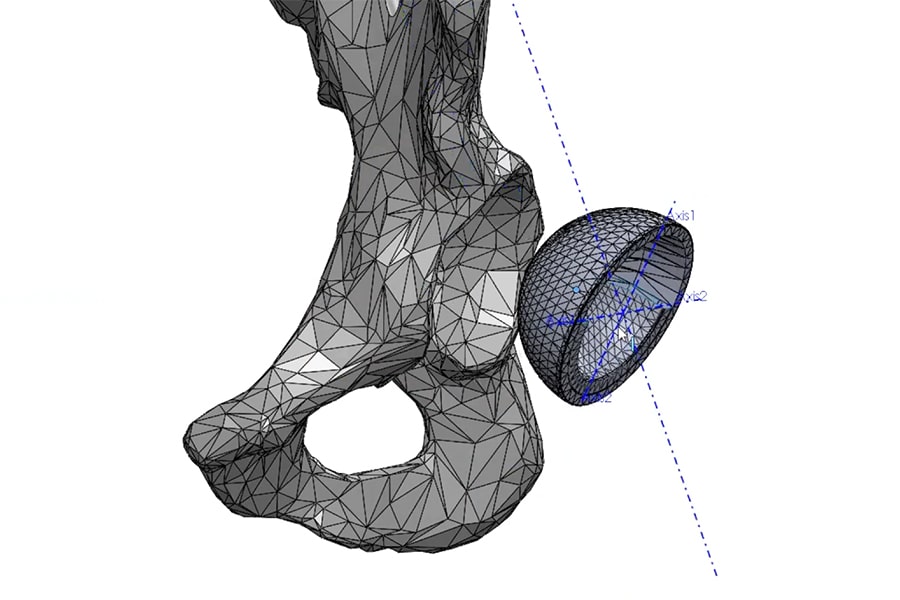The majority of total joint arthroplasty cases done in the United States still use 2D x-rays as the only preoperative imaging required before stepping into the operating room. This is the case despite growing amounts of evidence suggesting that CT preoperative imaging is more accurate when planning a total hip or knee replacement. Most hospitals are intertwined with 2D planning platforms and Picture Archive and Communication Systems, making it the easy choice to order for total joint patients. This can lead to several drawbacks in the surgical setting, however. It requires many different size variations of each implant component, increasing the cost of each procedure, and in a lot of cases increasing the surgical time needed in order to determine the appropriately sized implant for the patient.
There is a study now showing how 3D custom surgical planning can dramatically increase the accuracy of determining both the femoral and acetabular cup component sizes. The study found that 3D surgical planning led to a 93% accuracy rate in determining the femoral component and an 89% accuracy rate in predicting the acetabular cup component. The cases in which the correct size was not as predicted all remained within 1 size of the planned size.
This is significant in both reducing the required implant size variations needed during surgery, thus decreasing the procedural cost to both manufacturers and hospitals, as well as reducing the amount of intraoperative guesswork.
At Kinomatic, we believe that by using CT imaging to develop 3D custom surgical plans for orthopedic surgeries, and by offering our surgeons the ability to see and interact with those plans in virtual reality, we can achieve an even higher degree of accuracy. Kinomatic utilizes 3D imagery and virtual reality software not only to determine the optimal component sizes, but also the orientation, resection guides, and leg length. This creates a comprehensive custom surgical plan for each patient effectively eliminating all of the intraoperative guesswork, resulting in faster procedures and more natural feeling implants.
Original Article Source:
Di Laura, A., Henckel, J., Hothi, H. et al. Can 3D surgical planning and patient specific instrumentation reduce hip implant inventory? A prospective study. 3D Print Med 6, 25 (2020). https://doi.org/10.1186/s41205-020-00077-2
